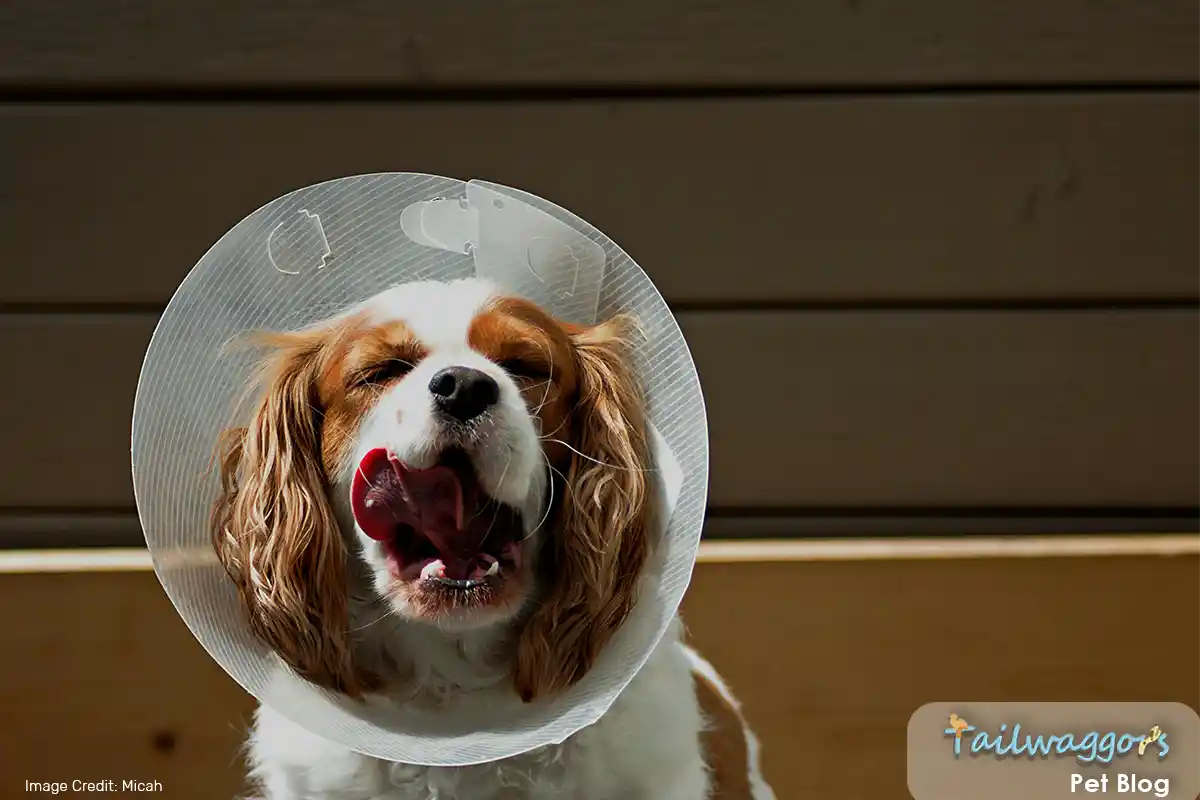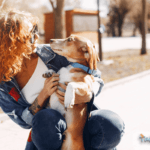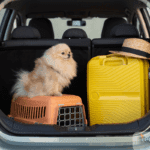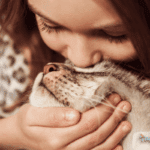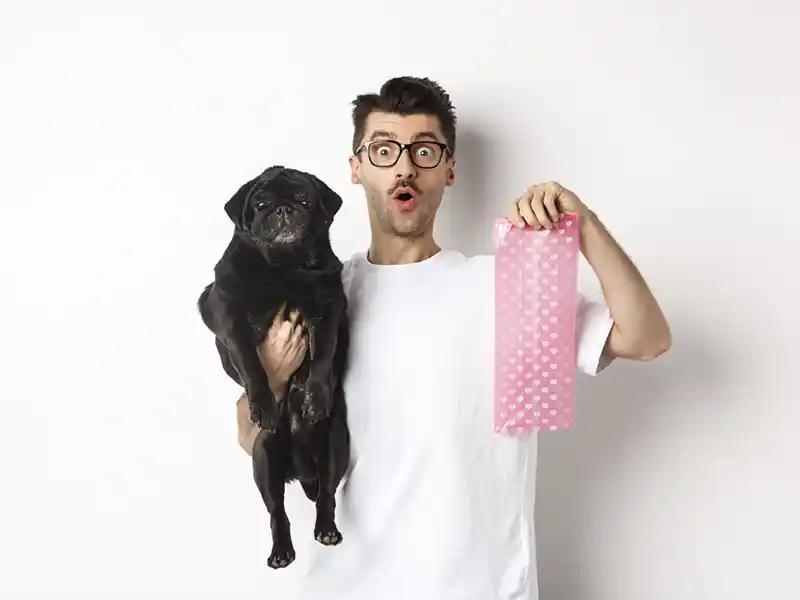Evidence-based recovery guidance from board-certified veterinary surgeons.
We know how worrying it can be when your pet is recovering from surgery – every little change might make you wonder if something’s wrong. That’s exactly why we created this emergency guide.
Think of it as your trusted friend who’s been through this before, helping you know exactly what to watch for and when to seek help. While most pets recover smoothly with proper care, knowing these warning signs gives you peace of mind and helps you act quickly if needed. Keep this guide handy (maybe on your fridge or saved on your phone), and remember – you know your pet best.
If something doesn’t feel right, it’s always better to check with your vet. They’d much rather hear from you early than late!
- ⚠️ Active bleeding or fluid seeping from incision
- ⚠️ Stitches opened or missing
- ⚠️ Yellow/green discharge appearing
- ⚠️ Strong or unusual odor from wound
- ⚠️ Pet very lethargic or collapsed
- ⚠️ No urination for over 12 hours
- ⚠️ Signs of excessive pain or distress
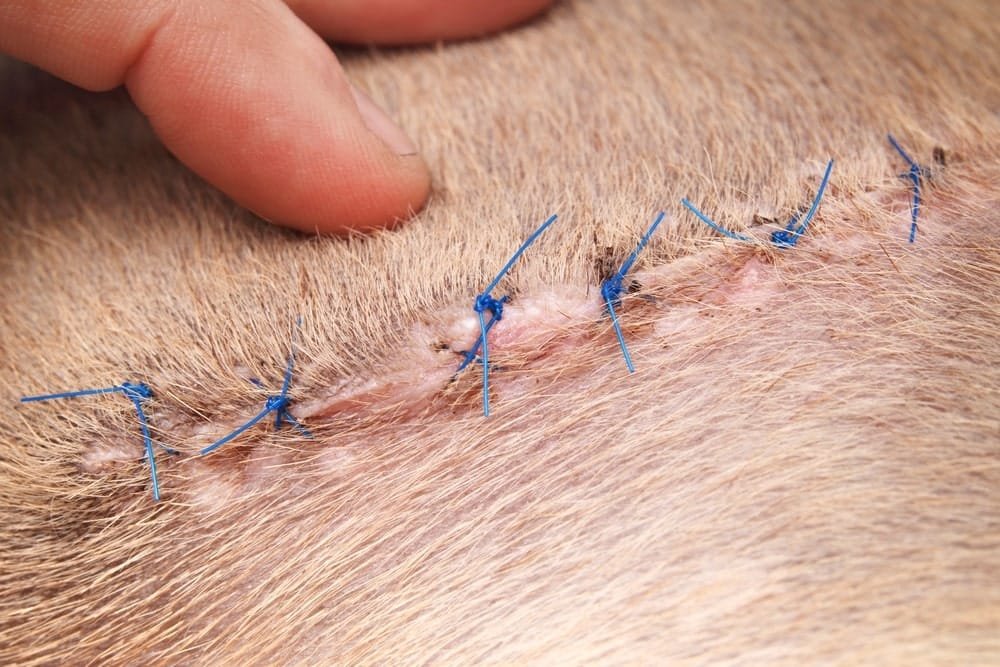
- • Quiet, warm room
- • Clean, comfortable bedding
- • Easy access to water
- • Away from other pets
- • Breathing rate and effort
- • Level of alertness
- • Comfort level
- • Incision site
- • No food for first 2-3 hours
- • Small water amounts when alert
- • Follow vet’s feeding instructions
- • Monitor for nausea
- ⚠️ Don’t bathe your pet
- ⚠️ Don’t remove the E-collar
- ⚠️ Don’t allow jumping/running
- ⚠️ Don’t skip medications
The First 24 Hours: Your Pet’s Recovery Journey
Think of your pet’s first day home from surgery like taking care of a groggy family member after a medical procedure. They’ll be a bit confused, sleepy, and need extra TLC. Let’s break down our recovery card in simple, practical terms:
Creating Their Cozy Recovery Space
Just like you’d want a quiet bedroom to rest after surgery, your pet needs their own peaceful corner. Think of it as their healing sanctuary:
- A quiet room away from household bustle (imagine trying to rest during a family party!)
- Comfy bedding that supports their body (like your favorite bed when you’re under the weather)
- Water within easy reach (but not so much they have to stretch)
- Some alone time from furry siblings (even best friends can be too much when we’re recovering)
Watching Over Them
You know how nurses monitor patients in the hospital? You’ll be your pet’s private nurse, keeping an eye on:
- Their breathing (should be as peaceful as when they’re napping)
- How alert they are (they’ll be sleepy, but should respond to their name)
- Their comfort (like making sure they’re not too hot or cold)
- The surgery site (think of it like checking a bandaid on a child’s knee)
Gentle Return to Food
Remember feeling queasy after anesthesia? Your pet might feel the same:
- Hold off on food for those first few hours (their tummy needs time to wake up)
- Start with small sips of water (like taking those first sips after being sick)
- Follow your vet’s meal plan (they know exactly what your pet’s body can handle)
- Watch for any tummy troubles (just like you would with a kid recovering from surgery)
The Important Don’ts
- ✔️ No baths (the incision needs to stay dry to heal)
- ✔️ Keep that E-collar on (yes, they’ll give you the sad eyes, stay strong!)
- ✔️ No Olympic training just yet (even if they feel ready to run)
- ✔️ Medications on schedule (just like you wouldn’t skip antibiotics)
Remember, this first day sets the stage for a smooth recovery. You’re not just following a checklist – you’re creating a comfortable, safe space for your furry family member to heal. And if you’re ever unsure, that’s what your vet team is there for. We’d rather answer a dozen caring questions than miss one important concern!
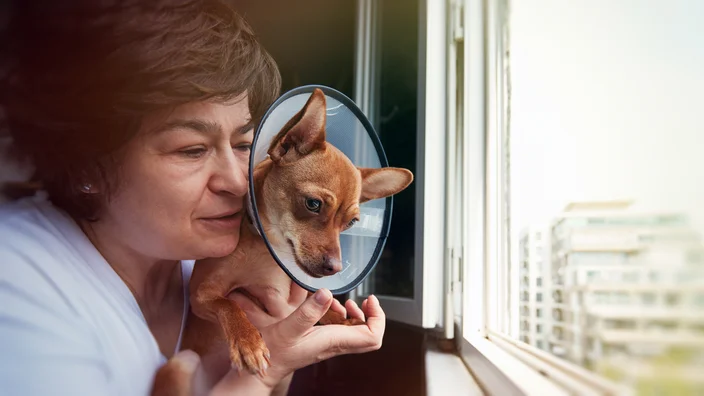
Daily Care Instructions
- • Inspect incision
- • Note any changes
- • Give medications
- • Brief bathroom break
- • Quick site check
- • Comfort assessment
- • Water refresh
- • Gentle reassurance
- • Final site check
- • Evening medications
- • Last bathroom break
- • Bedding adjustment
Setting up a consistent daily routine helps your pet heal comfortably and gives you peace of mind. Think of this schedule as your easy-to-follow roadmap for recovery – three simple check-ins throughout the day to keep everything on track. We’ve timed these checks around typical morning, afternoon, and evening routines so they fit naturally into your day while ensuring your pet gets all the care they need.
- • Expect sleepiness and reduced activity
- • Minimal appetite is normal
- • Some swelling around incision
- • Focus on rest and monitoring
- • Increasing energy levels
- • Improved appetite
- • Continued wound care
- • Restricted movement
- • Normal energy returning
- • Regular eating habits
- • Suture removal evaluation
- • Gradual activity increase
Your pet’s recovery is a journey, and each stage matters! From the critical early days (1–3) with rest and monitoring, to noticeable improvements during days 4–7, and finally regaining full energy and routine by days 8–14, this timeline outlines what to expect. Focus on providing comfort, keeping a close eye on healing, following your vet’s instructions closely and celebrating those small daily victories together!
- • Clean, dry incision
- • Even edges
- • Normal skin color
- • No excessive swelling
- • Compare to morning
- • Note any changes
- • Check E-collar fit
- • Clean if directed
Daily wound checks are the cornerstone of a smooth recovery. Start the morning with a careful inspection to ensure the incision is clean, dry, and healing as expected. In the evening, compare progress, note any changes, and double-check that the E-collar is secure. By staying consistent with these simple steps, you’re giving your pet the best chance for a complication-free recovery. Together, you’ve got this!
Next, “When do I know something is wrong?”
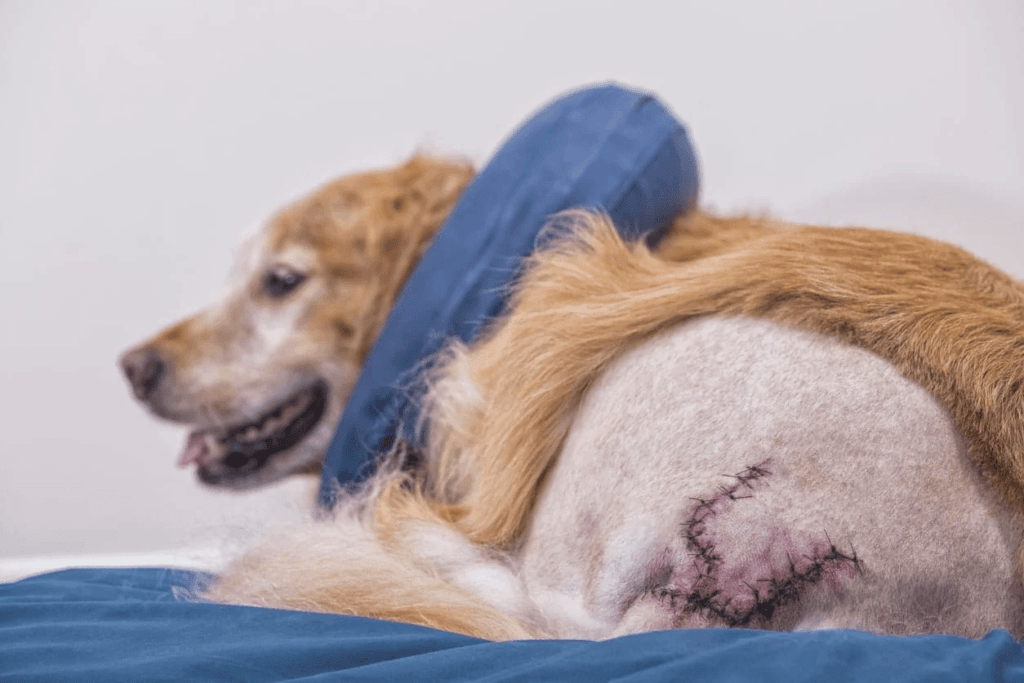
- • Mild redness at edges
- • Slight swelling
- • Small amount clear discharge
- • Light bruising
- • Increased redness/swelling
- • Yellow/green discharge
- • Gap in stitches
- • Strong odor
During recovery, mild redness, slight swelling, and a small amount of clear discharge are normal signs of healing. However, if you notice increased redness, yellow or green discharge, gaps in stitches, or a strong odor, it’s time to contact your vet!
Staying observant ensures a smooth recovery and helps catch potential issues early.
- ⚠️ Active bleeding or fluid seeping from incision
- ⚠️ Stitches opened or missing
- ⚠️ Yellow/green discharge appearing
- ⚠️ Strong or unusual odor from wound
- ⚠️ Pet very lethargic or collapsed
- ⚠️ No urination for over 12 hours
- ⚠️ Signs of excessive pain or distress
How does wound healing occur?
Healing pet stitches is a journey through distinct stages. First comes inflammation, where the body works to control bleeding and prevent infection, causing normal swelling and redness.
Then, in the repair stage, starting around 4-6 days post-surgery, cells create new tissue to mend the incision, gradually fading bruising and discharge.
Finally, the maturation phase transforms this new tissue into scar tissue, strengthening the skin and smoothing the scar over time. Patience is key, as the body’s magic unfolds, leaving your pet on the path to recovery and renewed strength.
What activities are we allowed to do?
- • Short leash walks only
- • No running or jumping
- • No stairs if possible
- • Limited movement
- • Gradually longer walks
- • Continued supervision
- • No off-leash activity
- • Monitor energy levels
During the critical first two weeks of recovery, your pet’s activities should be carefully managed to support healing and prevent complications.
In Week One, stick to short leash walks for bathroom breaks, avoid stairs, running, or jumping, and keep movement to a minimum.
By Week Two, you can gradually extend walk times while maintaining supervision. Off-leash activities are still a no-go, and energy levels should be closely monitored.
As highlighted in the infographic, these guidelines ensure your pet stays safe and steadily progresses toward full recovery. Remember, patience and consistency are key! And that this is a general guideline, some procedures may follow a different timeline and instruction from your vet.
Expert Insight “The first three days after surgery are the most critical. Following these guidelines significantly reduces complications and speeds healing.” – Dr. Esther Knoetze (BSc)(BVSc)
- ✔️ Consistent monitoring
- ✔️ Proper wound care
- ✔️ Medication compliance
- ✔️ Activity control
- ✔️ Regular assessment
Recovery Support Product
Vet-recommended essentials for comfortable healing
 Friends Forever Large Dog Bed, Orthopedic Dog Sofa Memory Foam Mattress, Calming Dog Couch Bed, Wall Rim Pillow, Water Resistant Liner, Washable Cover, Non-Slip Bottom, Chester, Large Grey
Friends Forever Large Dog Bed, Orthopedic Dog Sofa Memory Foam Mattress, Calming Dog Couch Bed, Wall Rim Pillow, Water Resistant Liner, Washable Cover, Non-Slip Bottom, Chester, Large Grey Brindle Waterproof Designer Memory Foam Pet Bed-Removable Machine Washable Cover-4 Inch Orthopedic Pet Bed-Joint Relief
Brindle Waterproof Designer Memory Foam Pet Bed-Removable Machine Washable Cover-4 Inch Orthopedic Pet Bed-Joint Relief BARKBAY No Pull Dog Harness Front Clip Heavy Duty Reflective Easy Control Handle for Large Dog Walking(Black,L)
BARKBAY No Pull Dog Harness Front Clip Heavy Duty Reflective Easy Control Handle for Large Dog Walking(Black,L)Disclosure: This website contains affiliate links. As an Amazon Associate, we earn from qualifying purchases at no additional cost to you. We only recommend products and services we trust and believe will be valuable to our readers. Thank you for supporting this website!
Individual Essentials

Comfy Cone Pet Cone for Dogs, Cats, Large, Black – Comfortable Soft Dog Cone Collar Alternative for After Surgery, Wound Care, Spay, Neuter – Dog and Cat Recovery Collar
The Original Comfy Cone: Help your pet heal in comfort with the All Four Paws Original Comfy Cone!
- ComfortCone™ E-collar
- Soft-edge design
- Allows eating/drinking
- Machine washable
The Comfy Cone is a soft, adjustable, and machine-washable e-collar alternative designed to aid pets’ recovery comfortably. Its flexible yet durable material provides mobility and reduces stress, while the soft-edge design allows pets to eat and drink with ease.
Reflective strips enhance safety in low-light conditions, and its snug fit accommodates various sizes. Ideal for post-surgery healing or wound care, the Comfy Cone balances comfort and practicality, though it may not be suitable for pets needing maximum rigidity for certain injuries.
- ✓ Protective collar
- ✓ Recovery bedding
- ✓ Medication schedule
- ✓ Vet contact info
- ✓ Care instructions
- ✓ Primary vet contact
- ✓ Emergency vet location
- ✓ Recovery helper
- ✓ Care schedule
Remember: While this guide provides comprehensive care information, always follow your veterinarian’s specific instructions for your pet’s unique situation.
Got a friend with a recovering pet? Share this guide and be the hero they didn’t know they needed!
Pet Post-Surgery Care: FAQs
Use an Elizabethan collar (E-collar) or an alternative to block access to the incision site. This helps prevent infection and ensures proper healing.
Signs of infection include:
- Increased redness or swelling
- Yellow/green discharge
- Unpleasant odor
- Persistent bleeding
Healing time ranges from 10-14 days, depending on the type of surgery and your pet’s health. Follow your vet’s post-op instructions for optimal recovery.
Contact your vet if you notice any signs of infection, your pet stops eating or drinking, or if stitches open prematurely.
No, it’s important to keep the incision site dry until stitches are removed or your vet confirms it is safe. Wet incisions can lead to infections.
Restrict your pet from running, jumping, climbing stairs, or playing with other animals. Controlled, calm movement is best during the recovery period.
Keep the area clean and dry. Check the incision daily for any redness, swelling, or discharge. Avoid applying any ointments unless directed by your vet.
Typically, your pet will need pain relief and antibiotics. Always follow the vet’s prescription schedule and contact them with any concerns about side effects.


